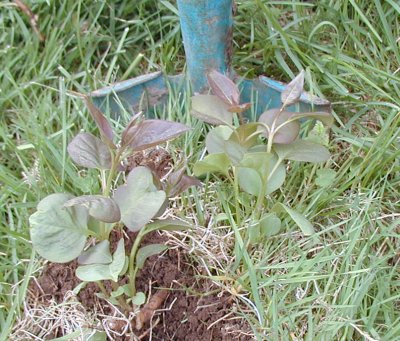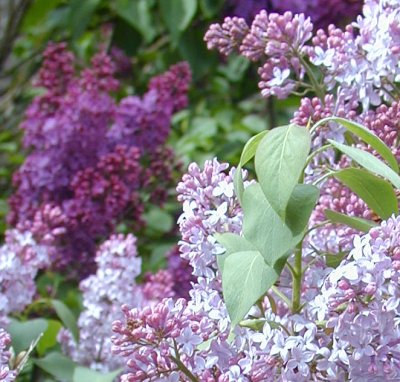Of all the trees and shrubs that bloom in spring, not many are able to match the colors and fragrance of the lilacs. It’s a good thing starting and growing lilacs a fairly simple job. They seem to be stimulated to bloom by warm weather and this year we have had sunny days and warm temperatures.
I think of the lilac as an old fashion type of tree/shrub as they have been around for quite a while. Often when riding in the country we can see a tight grove of lilacs all by themselves. At one time there was probably a farm house at this location and all that is left are the hearty perennial shrubs and flowers. Usually one can also find a few patches of day lilly’s at one of these location, but they are not blooming now.
There are 3 colors of lilac on our property. White, lavender and deep purple. We planted some of them but we were very fortunate to have a dark French lilac growing outside the kitchen window. The ones we planted came from suckers we dug up from relatives and it seem like the white and lavender send out shoots with abandon. The French, on the other hand do not seem to send out anything, which makes them all the more desirable.
Here is an example of the deep purple lilac.

French lilac
The French lilac does not seem to send out as many suckers, or new plants as do the white or the lavender. One way to get a cutting is to bend a branch down to the ground and bruise the bark at a spot where a new shoot is attached and cover it with soil. In time and with luck roots will develop on the shoot and the whole thing can be cut free from the main plant. The cutting is potted up and keep moist until the root system becomes stronger. Try making a small cut where the soft wood joins the hard wood stem and apply some rooting hormone. The best time to do this is in the spring when the growth is rapid.
Another method is taking a soft wood cutting. On the lilac branch there are 2 distance regions. The hard bark covered area is called the hardwood and the smooth new growth is the soft wood.
Soft wood cuttings can be started using potting mix and root hormone. Take a soft wood cutting at least a few inches in length and remove the lower leaves. Dip the stem in rooting hormone and put the softwood cutting in a pot filled with peat based potting soil. Keep the cutting in the shade and keep it moist but not too wet. Some growers cover the pot with a plastic bottle that has had the bottom cut off. Be warned the pop bottle will keep the moisture in but can also create a greenhouse effect that can cause the temperature to rise and kill the plant.
Taking cuttings from suckers is much easier and is usually more successful than soft wood cuttings. Look on the ground around the lilac for new shoots.
lilac shoot.

Take a shovel and insert the blade on the side away from the mother plant, lifting the shoot. Just lift the shoot to expose the root that attaches the shoot to the mother plant. Carefully remove the soil from the clod of soil to see where the root goes.
lilac root.

Next take your shovel and sever the root between the shoot and the mother plant. Then the root can be lifted out and planted in a pot of pro mix. Keep the cuttings in the shade and make sure they stay damp until the roots have a chance to strengthen.
lilac cutting

The larger the cutting the deeper the hole. Try to keep the roots protected until they can be planted.
Many of the planting on our property were unceremoniously dug up, dumped in a pail and planted right into the ground. Lilacs will grow fast and the deer do not seem to bother them.
Here is one last photo showing the contrast between the violet and deep purple lilacs.
violet and purple lilacs


Leave a Reply
You must be logged in to post a comment.